12 of the best things to do in Oman
The must-do activities when visiting this oft-overlooked Gulf state
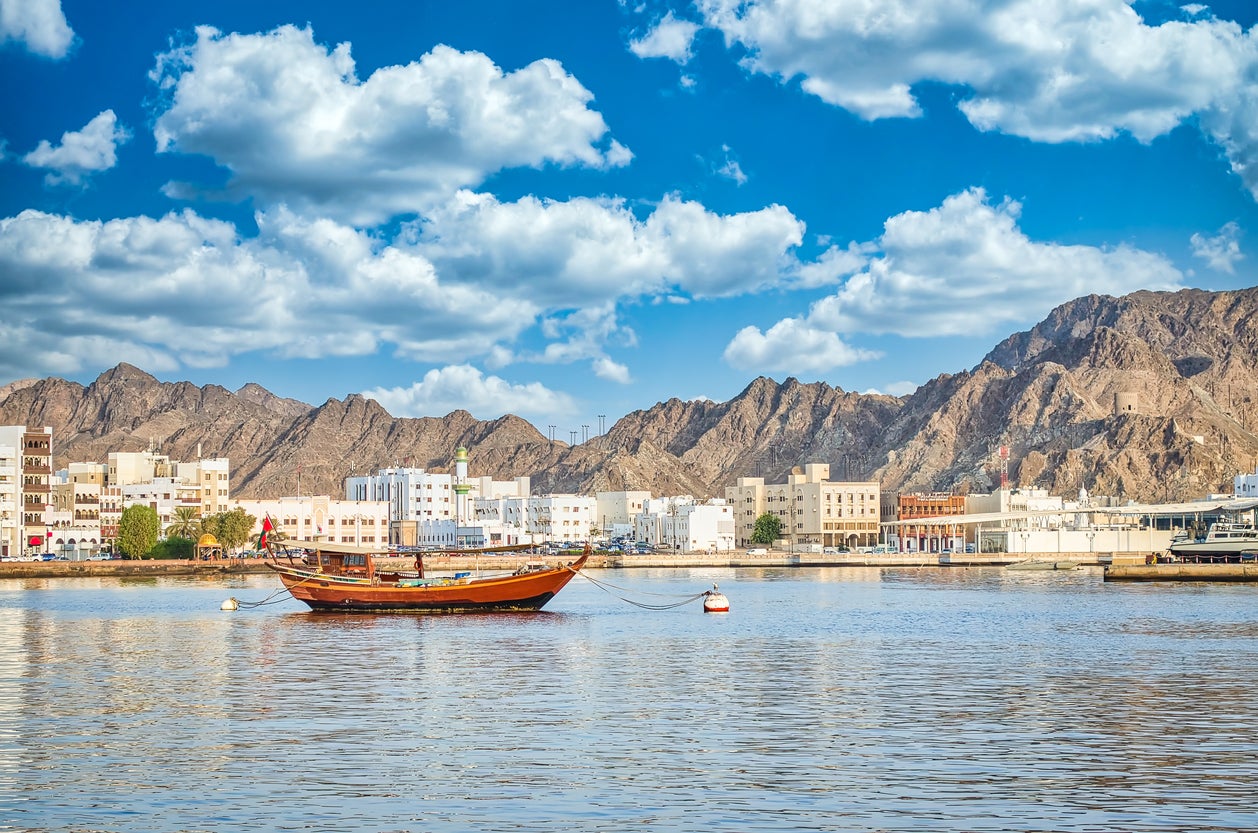
A country that combines still-visible history and traditions with modern cities and enchanting natural landscapes, Oman remains an often overlooked destination.
So far untouched by mass tourism, it has preserved much of its nature and heritage without getting stuck in the past; cities such as Muscat and Salalah have added modern Islamic architecture to existing streets populated by mosques, souks and traditional houses.
The country also possesses some of most diverse geography in the Arabian Peninsula, from spectacular mountain ranges to seven desert oases and vast expanses of desert. All this means that Oman provides a rare opportunity for tourists to experience the region’s past and the present while exploring some of the most remarkable natural sites in the Gulf, making for a fascinating potential holiday destination.
Here are some of the best things to do and see on your next visit.
Explore an amazing capital
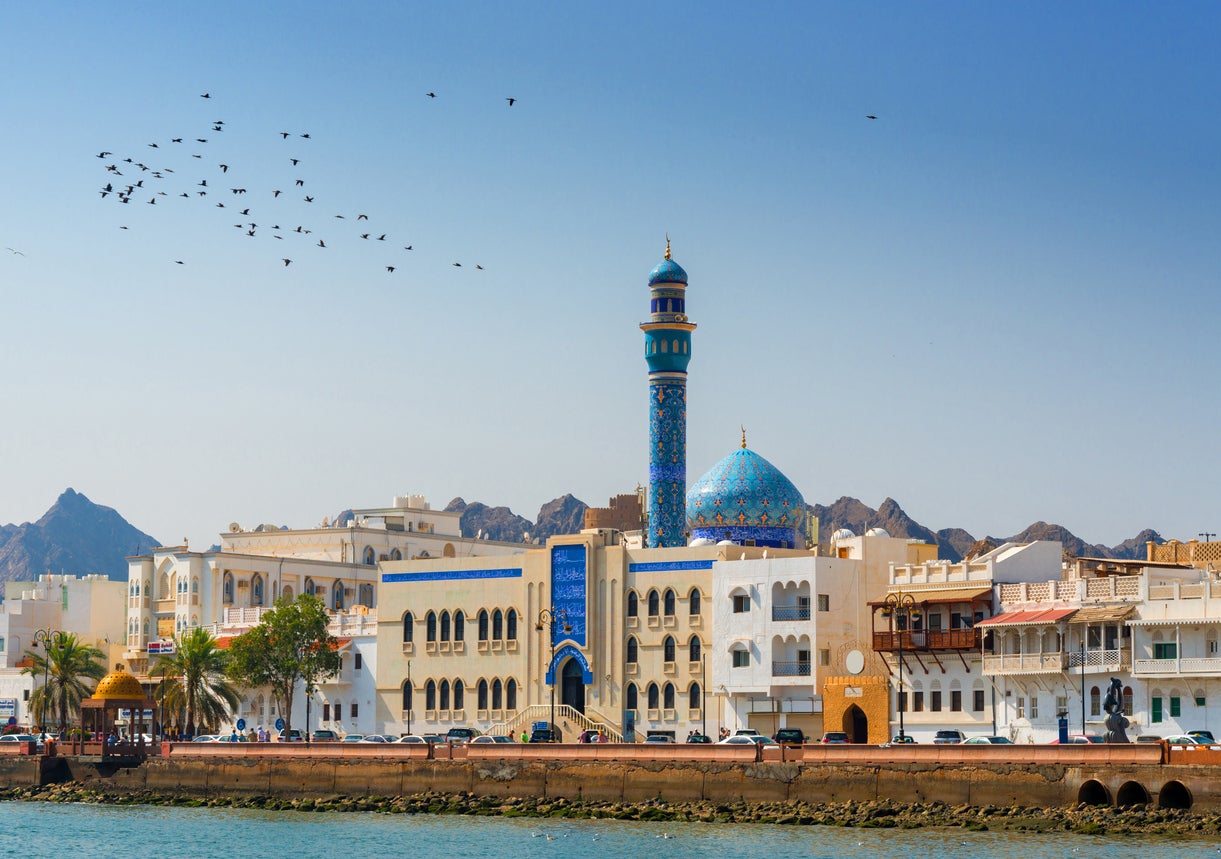
Characterful Muscat sits in appealing surroundings between the seas of the Gulf of Oman and the towering Hajar Mountains.
A plethora of white-washed facades starts at the two-mile long waterfront promenade of the Muttrah Corniche. This neighbourhood also houses the Muttrah Souk, one of the oldest souks in the Arab world, and borders Old Muscat, the historic city centre.
The sea of low-lying structures stretches back to the mountains, occasionally interrupted by the odd honey-hued building or the colourful domes and minarets of mosques amid modern neighbourhoods like Madinat As Sultan Qaboos and Al Qurum. Join the crowds visiting Al Qurum beach before taking in the magnificent contemporary Omani architecture of the Sultan Qaboos Grand Mosque and the Royal Opera House.
Read more on North Africa and Middle East travel:
Uncover Omani history at Nizwa and Bahla
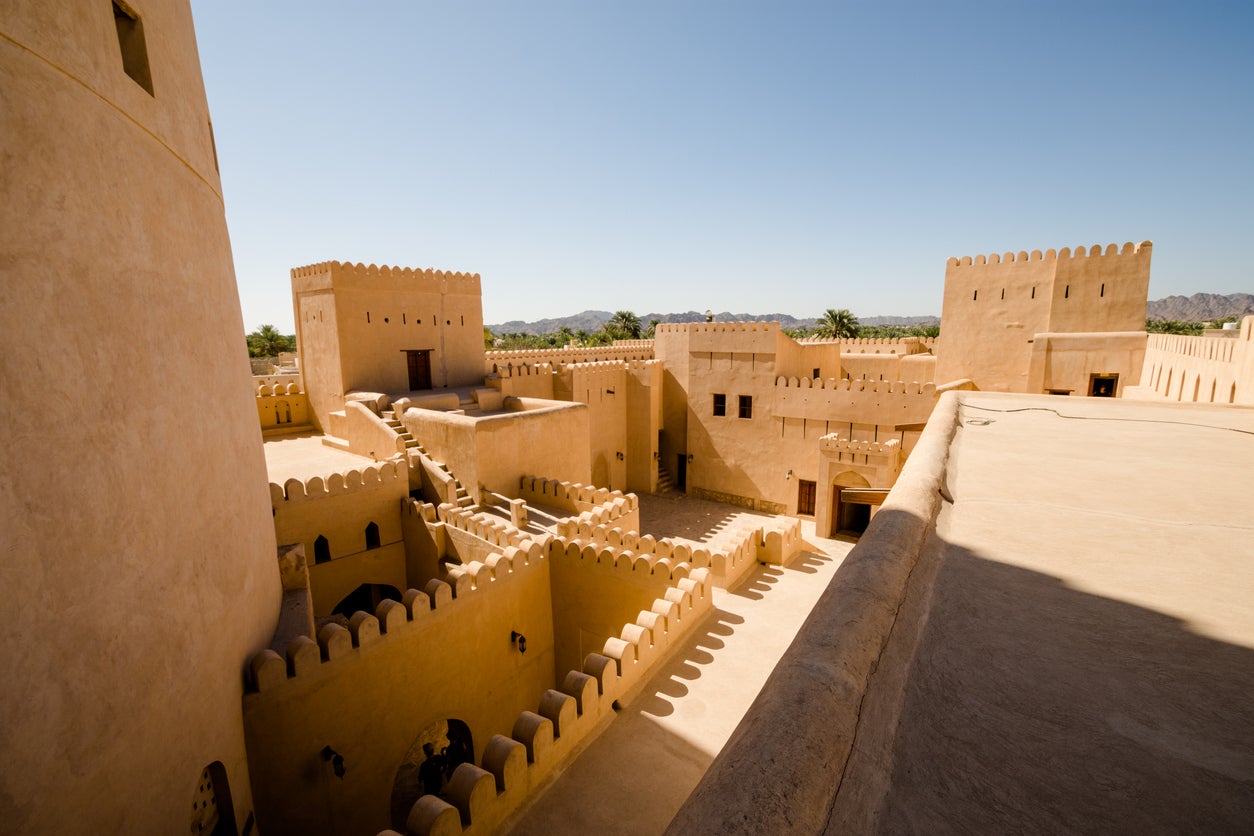
A former capital city, Nizwa has transformed from a deeply religious, fiercely conservative town into one of Oman’s most visited tourist destinations.
This city of soaring minarets and sand-coloured buildings still maintains a strong connection to its religion and heritage, but these days welcomes visitors who flock to its 17-century Nizwa Fort, with its high walls and 40-metre tall circular defensive tower. The city’s souk is pleasingly untouristy, frequented largely by locals looking for fresh produce and homewares.
Nearby Bahla, a fortified oasis town that’s home to a 12th-century fort, is definitely worth a visit too. A mazy complex that contains mud houses, oasis vegetation, tall desert trees, wind towers, mosques and a small souk, the fort is a Unesco-listed site encircled by a seven-mile protective wall.
Visit the ‘Land of Frankincense’
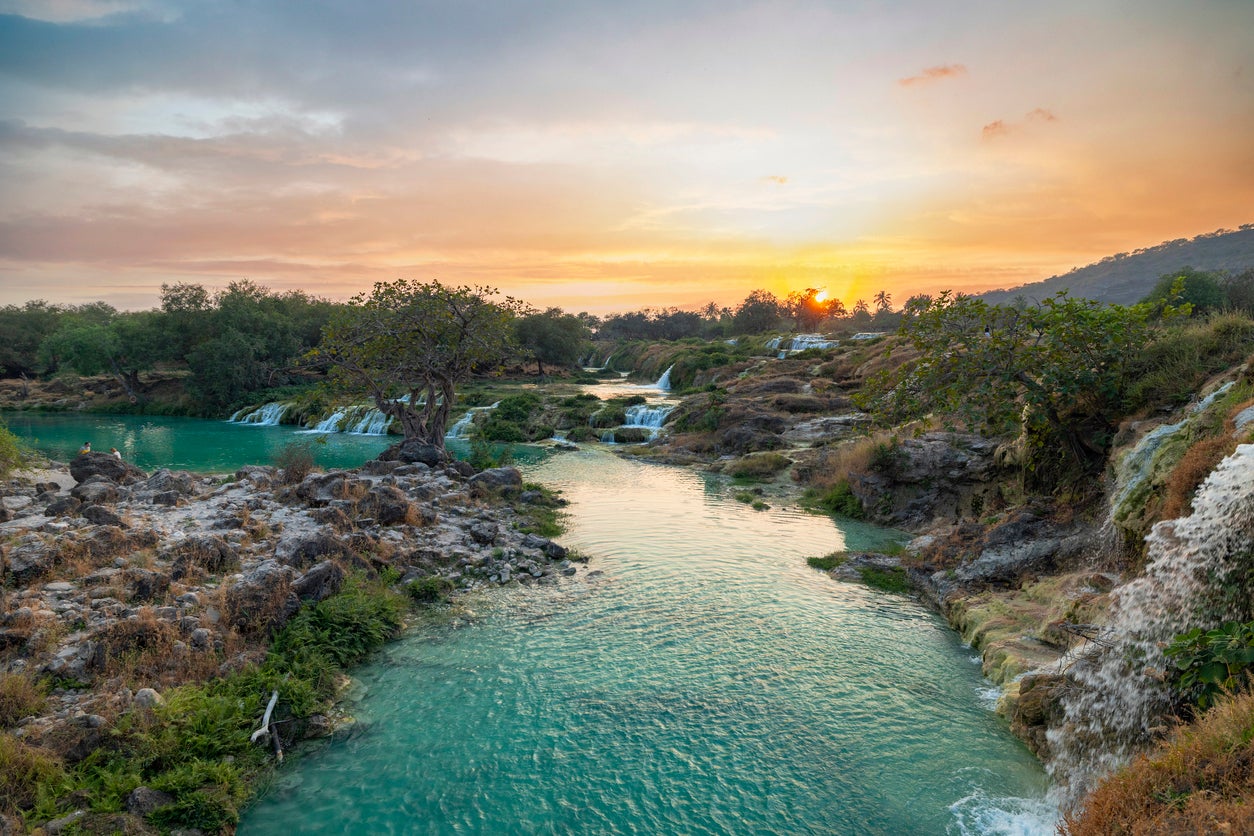
Once famed for its production of the aromatic oil, the ‘Land of Frankincense’ is one of Oman’s Unesco-listed sites. It is part of the wider Dhofar region, an exceptionally diverse part of Oman which welcomes an annual monsoon, known as the khareef, arriving in June and turning the normally arid landscape into a land of seasonal waterfalls and abundant greenery.
As well as pleasant summer temperatures, the region contains some of the best scenery in the entire country. A series of captivating landscapes features desert trees, misty waterfalls and turquoise waters such as those at Wadi Dawkah and Wadi Darbat, while the coast is home to white-sand beaches at Mughsail and Al Fazayah.
The region’s capital, Salalah, is the birthplace of the late Sultan Qaboos and is the site of his former palace and a large stone mosque built in his name. Situated on the coast, it has its own section of beach named Al Haffa, while other attractions include the Al Hosn souk and the Museum of the Frankincense Land.
Camp in Sharqiya Sands
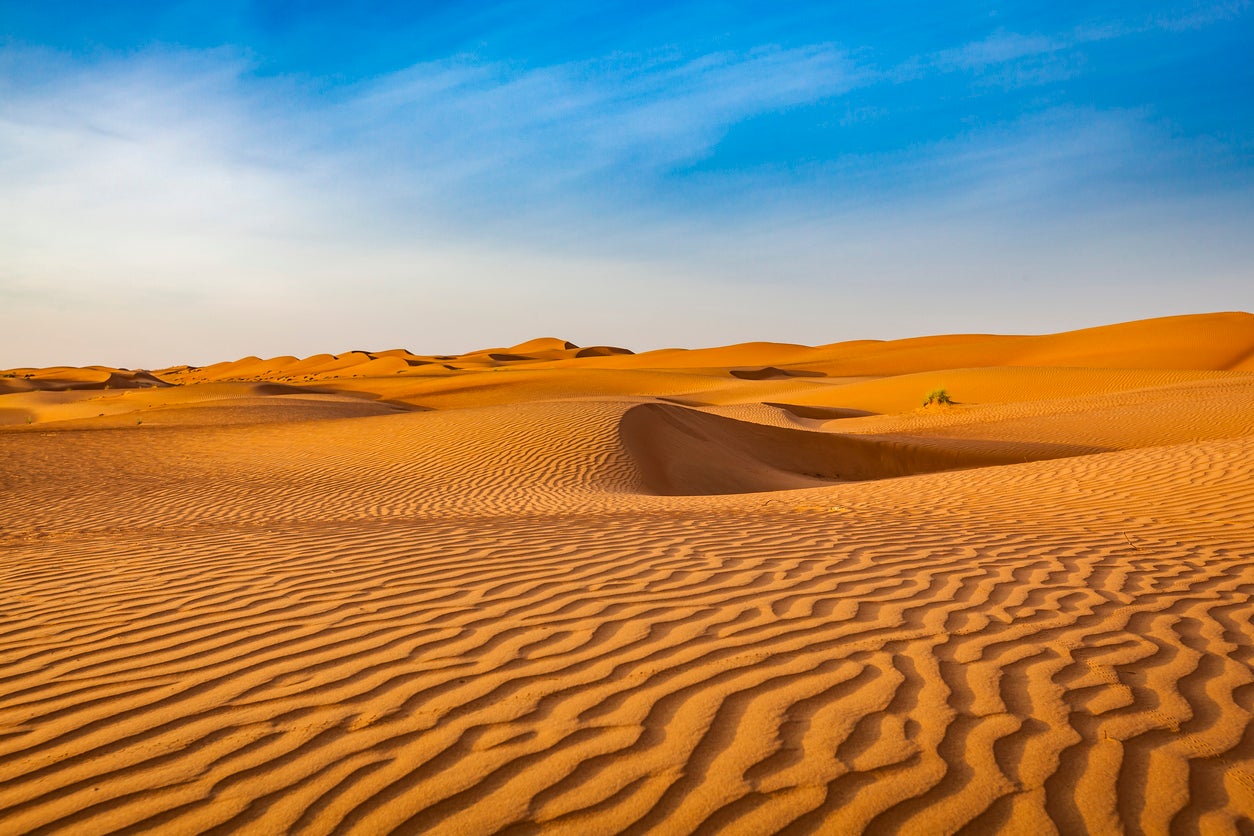
This particular desert occupies an area of almost 5,000 square miles between Muscat and Sur. This landscape of oases and undulating dunes shaped by gentle winds is still occupied by the nomadic Bedouin people and is a great place to learn about their traditions and history. One of the best ways to experience it for yourself is with a camping stay, overnighting in one of a series of impressive, intricately assembled camps.
Aside from stargazing and traditional Bedouin meals, many camps offer excursions including camel rides, 4X4 safaris and dune buggy tours over the imposing dunes, some of which can reach up to 100 metres high.
Hike in the Hajar Mountains
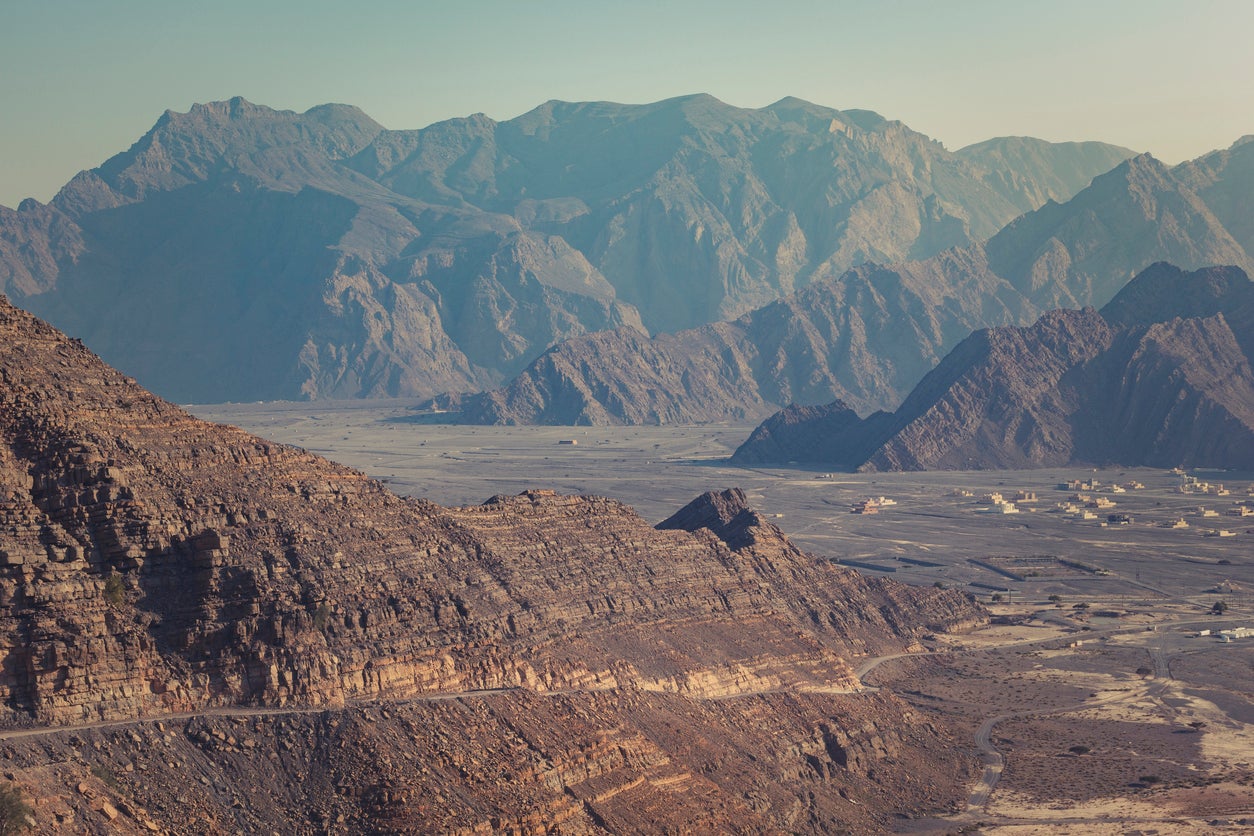
The Al Hajar Mountains span Oman and part of the UAE over their 430-mile length. A hike through some of the country’s highest points is not to be missed. The tallest peak in the country is Jebel Shams, which stands at just over 3,000 metres and offers several routes of varying lengths and difficulty. One of the most popular is the nearly four-mile round-trip Balcony Walk, which starts at Wadi Ghul (more on that below) and leads you along the canyon edge.
Jebel Akhdar – the Green Mountain – offers another popular hike on a mountain that reaches just under 3,000m. Both peaks provide sweeping views over the incredible mountainous terrain, and once done hiking there are dozens of nearby places to visit, from traditional villages to valley oases.
Visit a Wadi
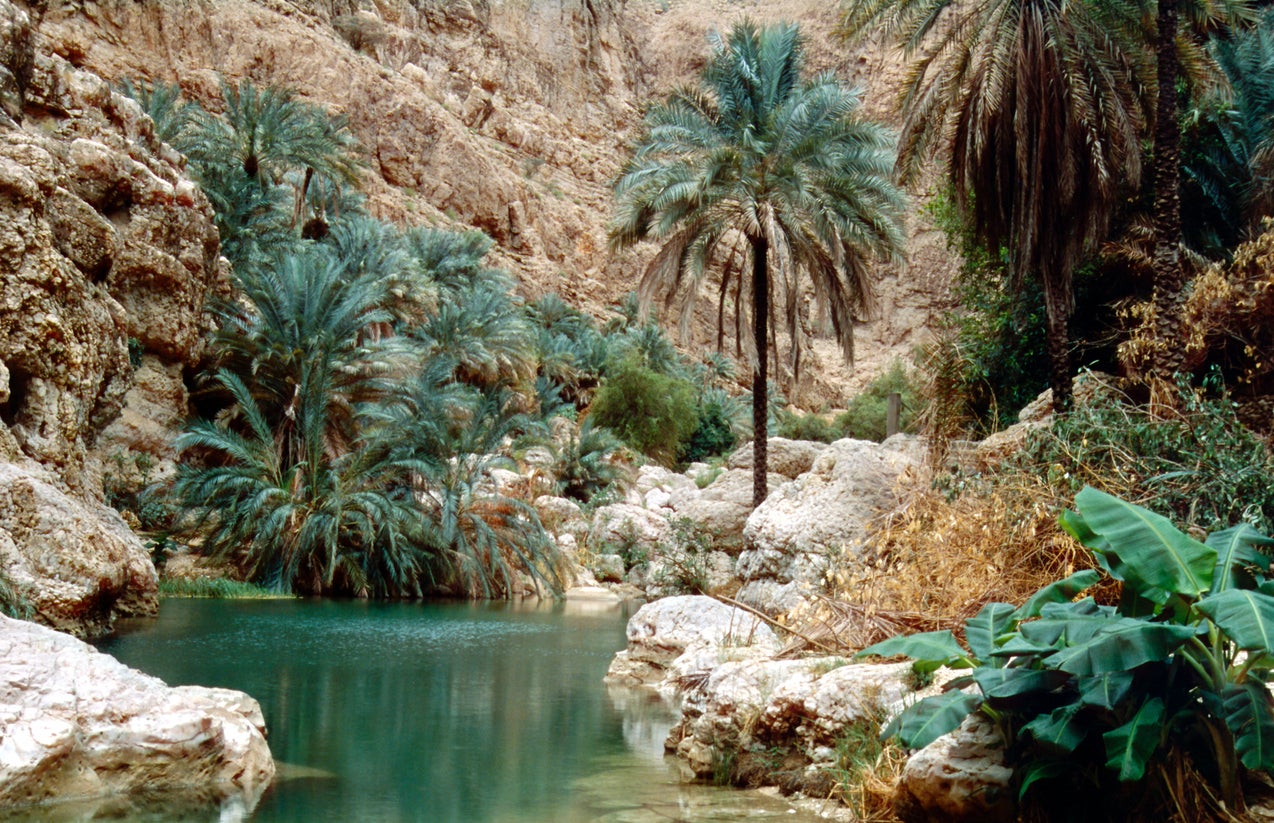
The arid, mountainous landscapes of Oman are punctuated by a series of oasis valleys called wadis. Usually consisting of a body of water surrounded by dramatic rugged mountainside and lined with palm trees and sparse desert vegetation, wadis are some of the prettiest natural attractions in Oman.
The three wadis of the Eastern Hajar Mountains are particularly famed for their beauty. Wadi Bani Khalid has a series of emerald green pools and narrow canyons, while Wadi Shab is renowned for its partly submerged caves, hidden waterfalls and translucent waters. Wadi Tiwi is surrounded by high cliffs, with clear waters and more vegetation due to the fertile soil.
Wadi Darbat is considered the best wadi near Salalah (and benefits from the yearly monsoon), while many others are located fairly close to Muscat, including Wadi Bani Awf, Wadi Al Hawqayn, Wadi Ad Dayqah and Wadi Al Arbaeen, all within 100 miles of the capital.
See the ‘Grand Canyon’
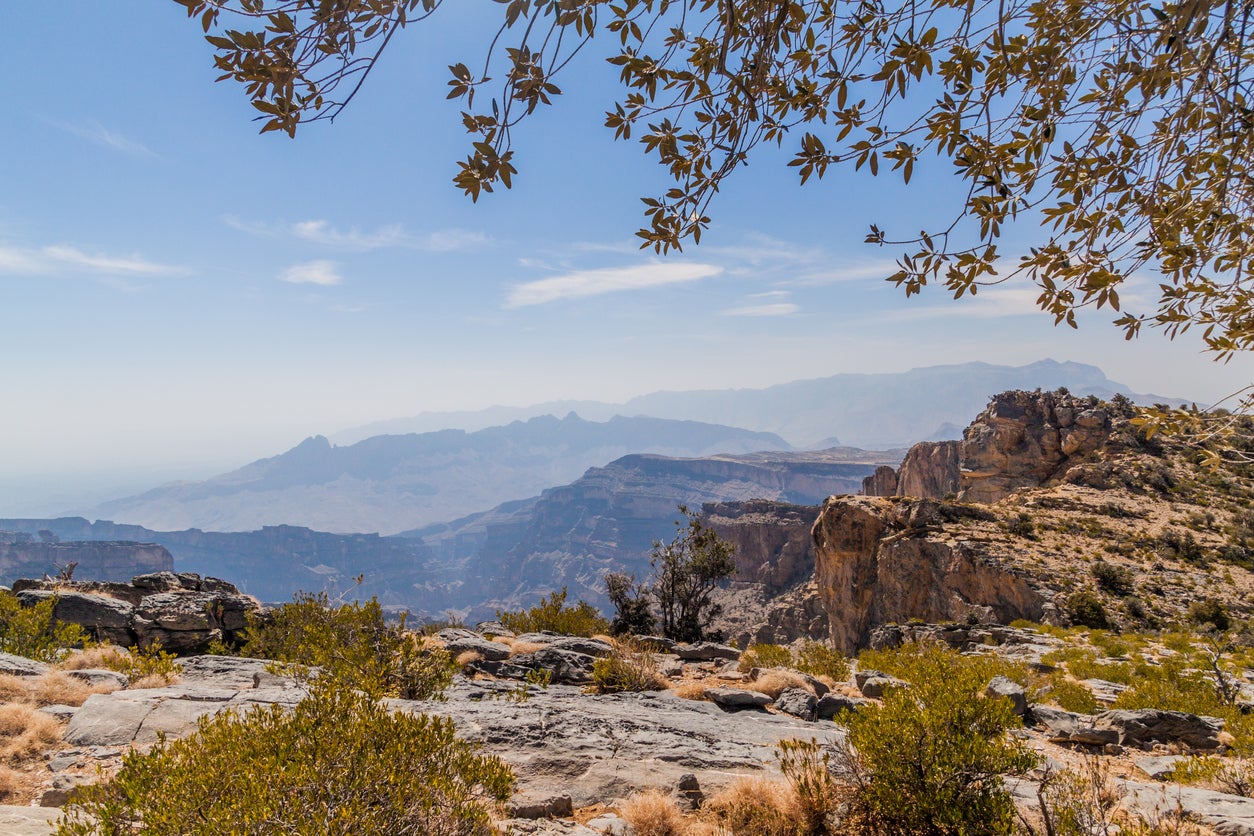
Another prominent feature of the Hajar Mountains, the ‘Grand Canyon’ of Oman – known as Wadi Ghul – is located near the village of Ghul, close to Jebel Shams. A highlight of the country’s incredible mountain scenery, it’s a dry valley flanked by imposing limestone cliffs. It reaches almost 1,000 metres deep in some parts, and one of the best places to take it all in is the Wadi Ghul Viewpoint, offering a safe, stepped cliff edge from which to admire the views.
Hit the beach
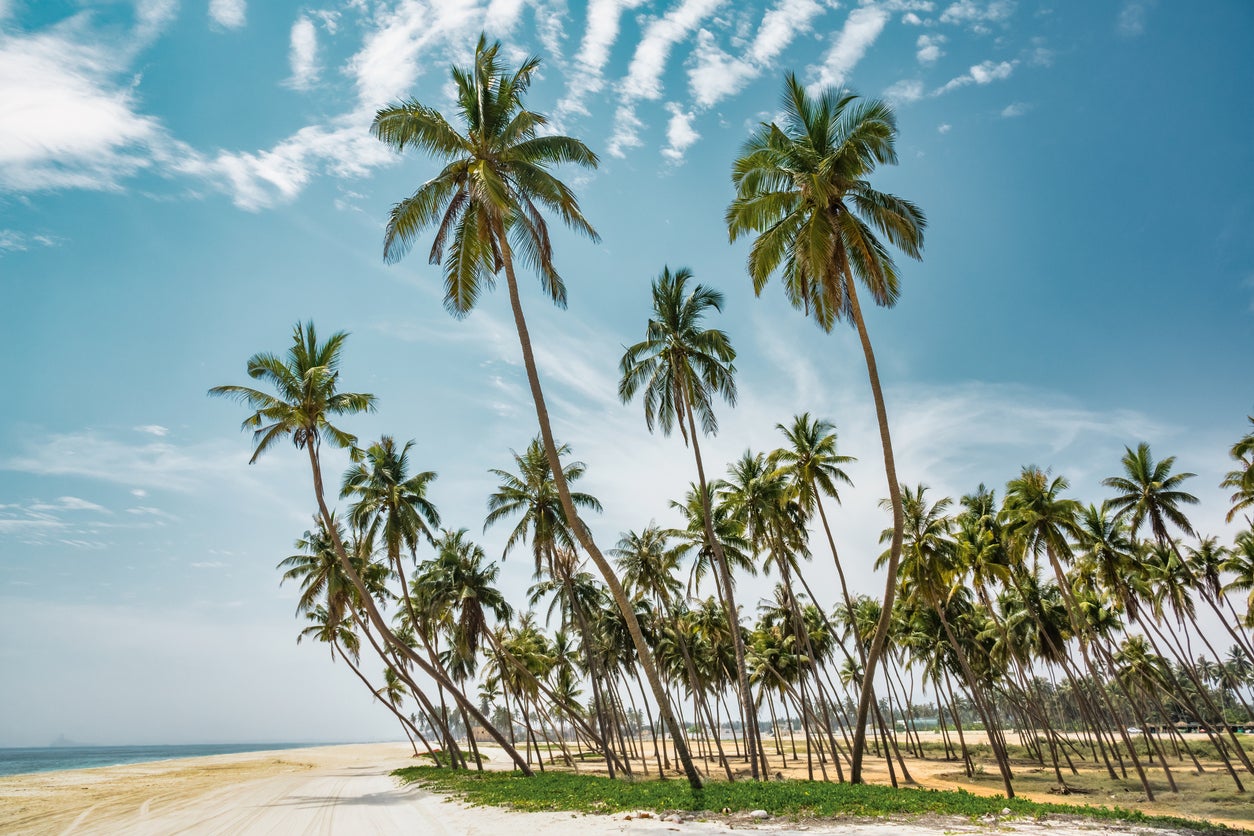
Oman’s enviable location at the most southeastern point of the Arabian Peninsula provides the setting for its tranquil beaches. It is home to almost 2,000 miles of coastline, from the less-inhabited Musandam Peninsula in the north to beaches such as Al Haffa in the southern city of Salalah.
For city beaches, head to Al Qurum or Al Bustan in Muscat, the aforementioned Al Haffa in Salalah or Sur Beach. The waters are usually calm, and there are plenty of opportunities for water sports and diving.
In Musandam, many of the beaches are more difficult to get to but visitors are rewarded by a crowd-free sandy stretch; some of the best include the golden Khasab Beach, the rocky inlet at Secret Beach and Bassa Beach, where the sands meet Musandam’s imposing mountain scenery.
Some of the best beaches in other sections of the country include Tiwi, a swathe of white sands and blue waters located between Muscat and Sur, Al Mughsail, with its golden sand surrounded by dramatic mountains, Khalouf, all sandy dunes and grassy knolls, and Masirah, an island that is usually overlooked by tourists but houses miles of pristine, unspoilt beaches and charming fishing villages.
See the ‘Norway of Arabia’
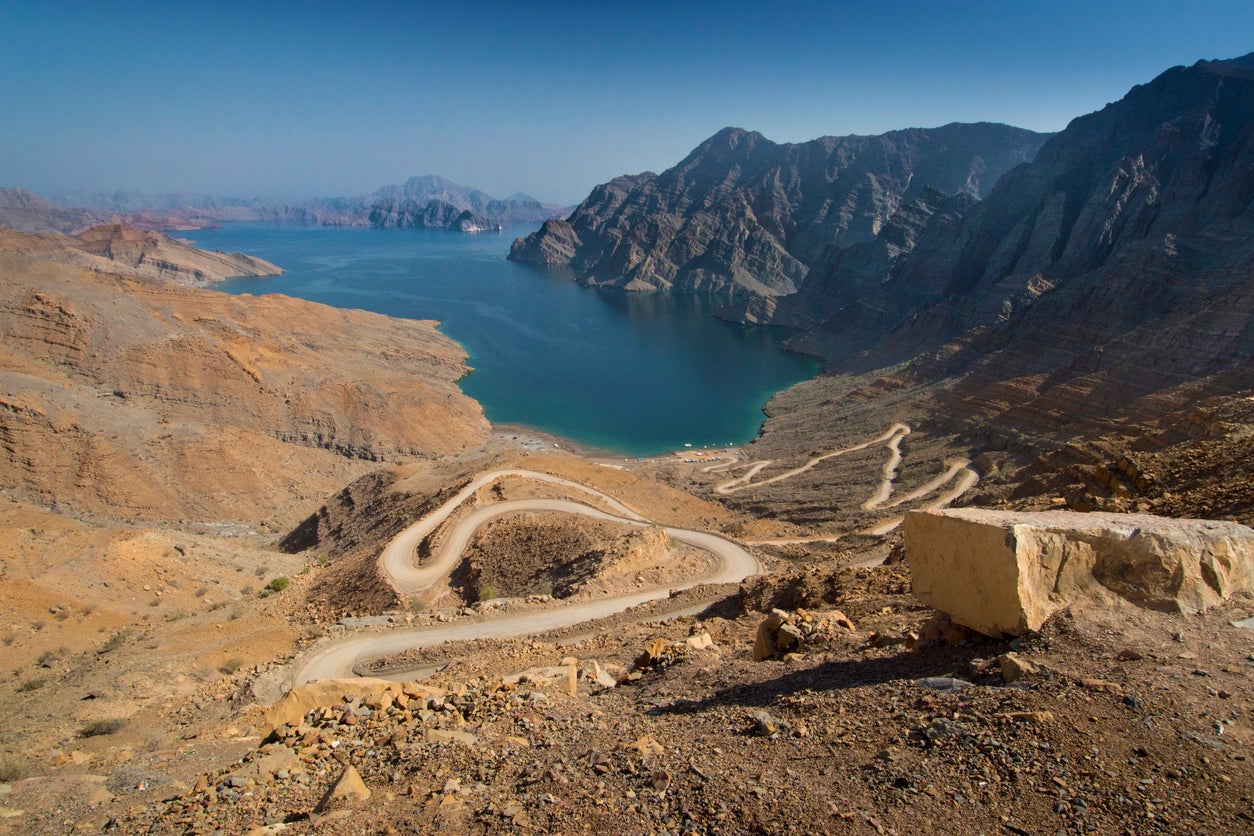
The Musandam Peninsula is separated from the rest of Oman by a section of the UAE, and sits at the northeastern tip of the Arabian Peninsula. Though its location – roughly six hours from Muscat – means that some may skip visiting, it’s worth the effort, home to some of the most striking landscapes in the country.
Here you’ll find a series of khors, fjord-like flooded valleys where large expanses of water are bordered by sections of the Hajar Mountains. Some of the most visited include Khor Al Sham and Khor Najd, known for their attractive lagoons and opportunities for wild swimming.
Khasab is the main settlement in the region, and will likely be your base as it houses most of the tourist accommodation. Once a hub of smuggling due to its proximity to Iran, it is now an energetic town with a lively harbour and souk.
Go turtle-watching at Ras Al Jinz
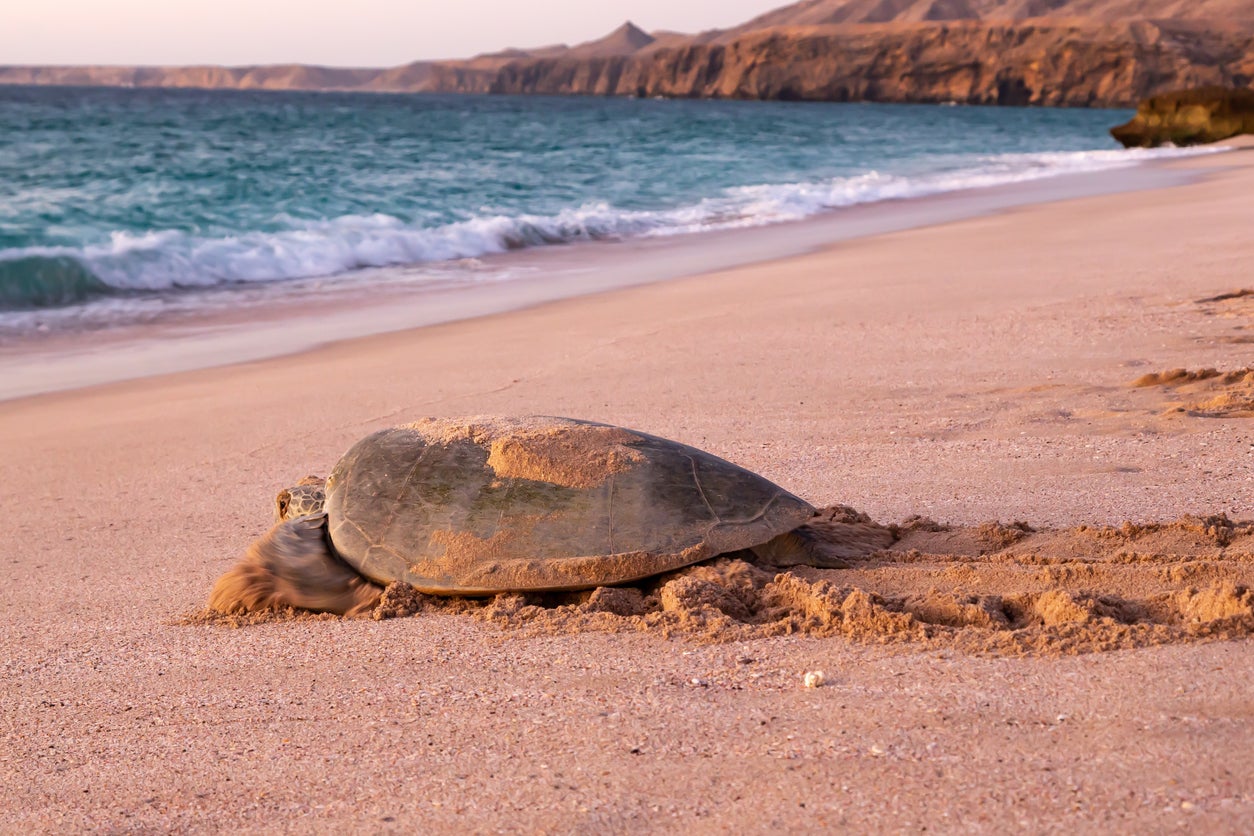
Ras Al Jinz is a beach that’s part of the wider Ras Al Hadd Nature Reserve, which was designated in 1996 and sits on the easternmost point of Oman. The reserve runs for almost 30 miles down the coast between the villages of Ras Al Hadd and Ras Ruwais, and Ras Al Jinz is the premier beach for spotting nesting green turtles and recent hatchlings (though you can also see them as Ras Al Hadd).
Many companies offer guided tours and passes required for beach access, while the Ras Al Jinz Turtle Reserve, an eco-lodge rather than a specific reserve, has a Turtle Visitor Centre with museum displays and accommodation for those who also want to get a view of the animals at night.
Swim in the Bimmah Sinkhole
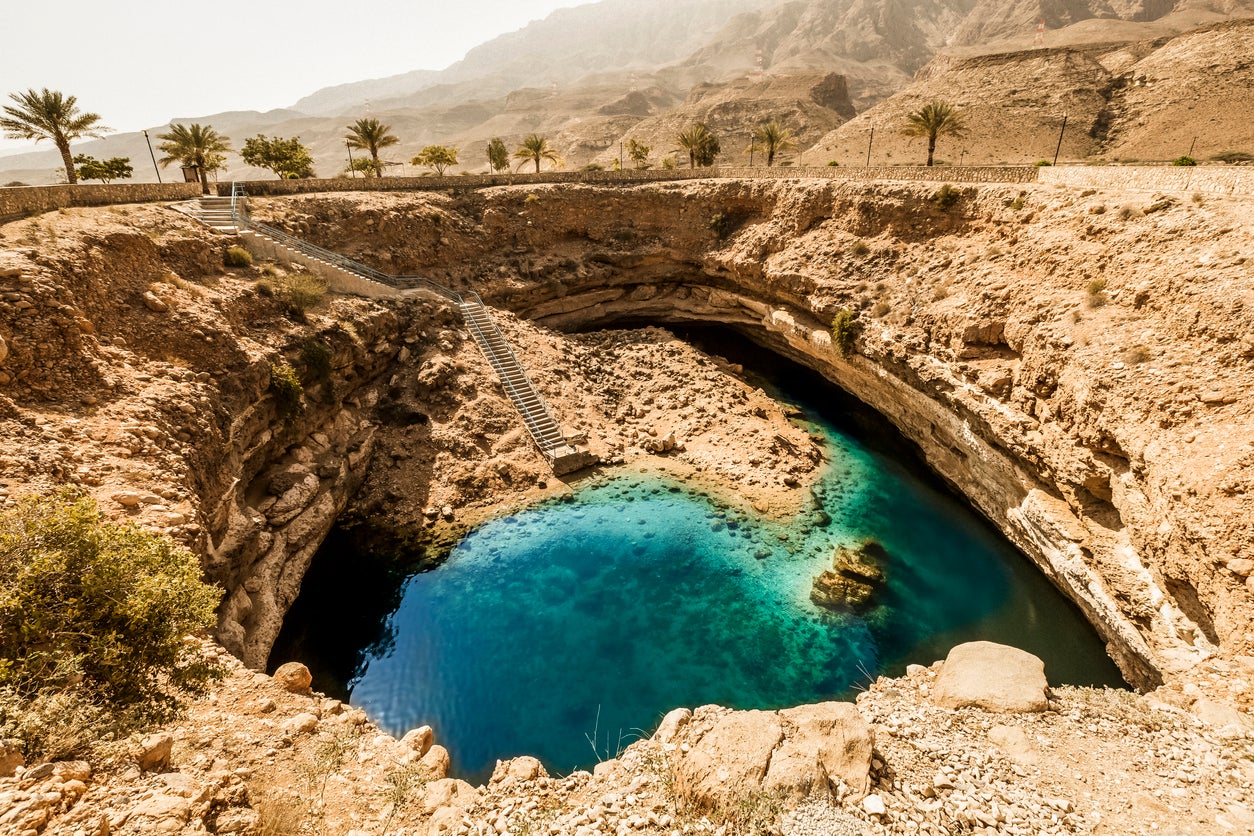
Known locally as Hawiyyat Najm, the Bimmah Sinkhole is a natural attraction that lies almost equidistant between Muscat and the coastal city of Sur. Formed through the collapse of the underlying limestone, the sinkhole, now surrounded by large golden hills, contains a lake of attractive emerald waters, which owe their colour to the mix of salt and fresh water. An ever-popular place for a wild swim, the sinkhole is part of the wider Hawiyyat Najm Park, which is open every day from 8am until 8pm.
Witness traditional Omani life in Misfat al Abriyyin
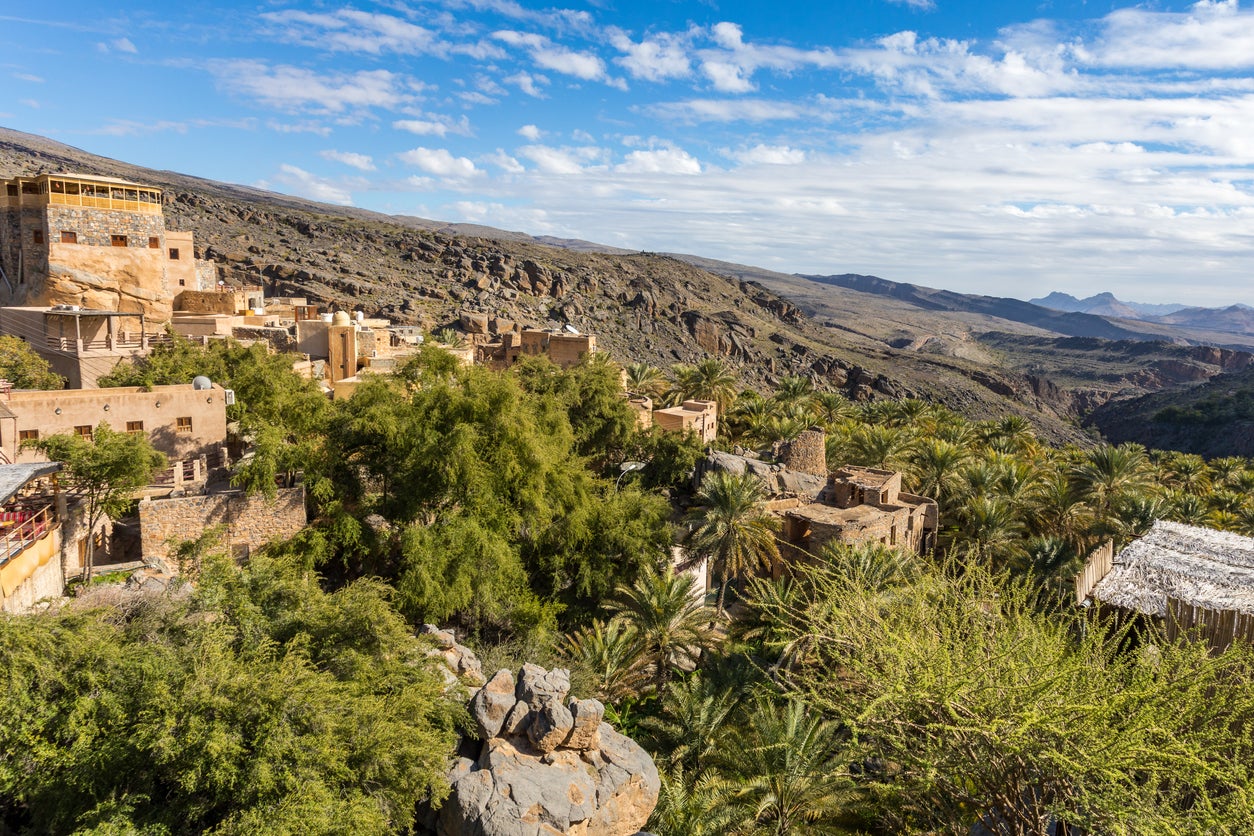
Not too far from Jebel Shams lies Misfat al Abriyyin, tucked between the arid terrain of the Hajar Mountains and the abundant vegetation of the lower oasis. Famous for its traditional mud, stone and plaster buildings built into the mountain rock, this 300-year-old, 1,000-metre high village is a narrow network of alleys lined by tightly packed houses that heavily relies on its traditional falaj irrigation system.
Designated as one of the world’s ‘Best Tourism Villages’ by the UN’s World Tourism Organisation, Misfat al Abriyyin is slowly opening up to tourism, having previously relied on farming. You’ll find car-free streets and an absence of bars and restaurants; instead, visitors discover a quiet town whose way of living reflects traditional Omani life.
Read our reviews of the best winter sun hotels
Join our commenting forum
Join thought-provoking conversations, follow other Independent readers and see their replies
Comments
Bookmark popover
Removed from bookmarks